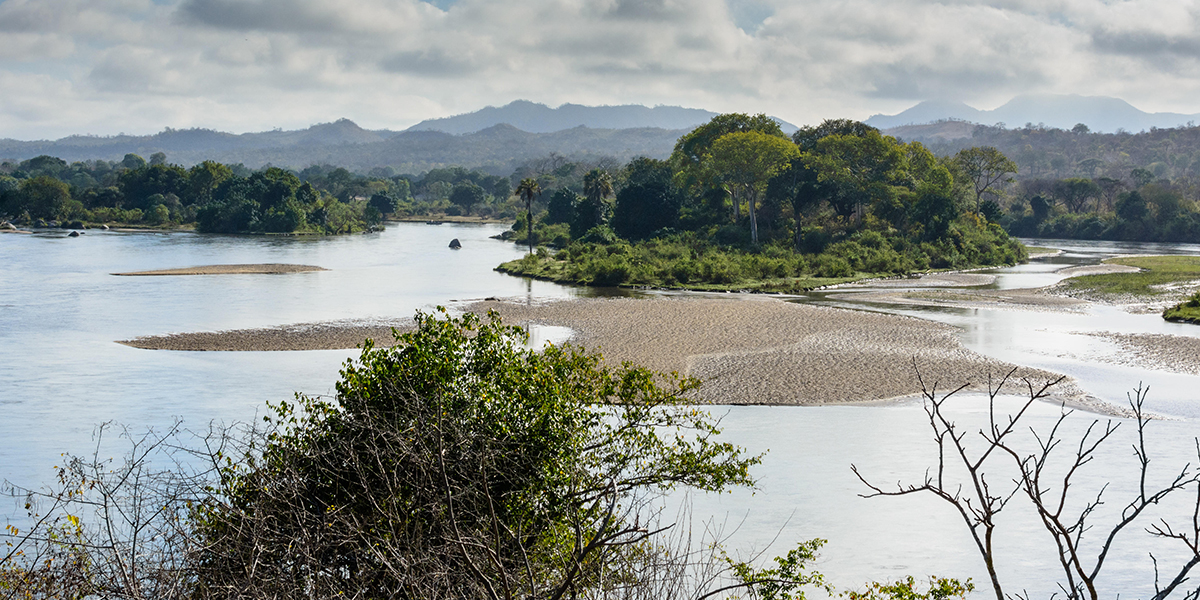Program Overview
MCC’s $345 million Malawi Compact (2013-2018) funded the $20 million Environmental and Natural Resources Management (ENRM) Project. Consistent, reliable, and affordable electricity is a key constraint on Malawi’s economic growth, so the program aimed to reduce disruptions and increase the efficiency of hydropower generation. The Weed and Sediment Management Activity provided equipment to remove sediments and weeds in the Shire River that hinder hydropower generation. The ENRM Project and the Social and Gender Enhancement Fund created a grant facility to promote sustainable land management. The project also sought to establish an environmental trust to fund land management activities post-compact.Key Findings
Weed and Sediment Management Activity
- With two new weed harvesters, Malawi’s Electricity Generation Company (EGENCO), removed an annual average of nearly 29,000 tons of weeds between 2019 and 2021, exceeding the 2012-13 baseline weed removal level by 274 percent.
- Using the new dredge at Kapichira since April 2020, EGENCO has removed more sediment than envisioned in the sediment management plan.
Environmental Trust Sub-Activity
- The Shire BEST environmental trust, which was established as a sustainable financing mechanism for environmental interventions in the Shire River Basin, has key stakeholders from Malawi’s energy and water sectors on its board of trustees.
- The inability of the trust to secure sufficient funding emerged as the central constraint on its potential impact.
Overall ENRM Project
- The ENRM Project contributed to increases in the efficiency and reliability of the three Shire River hydropower plants through weed and sediment reductions.
- Stakeholders perceive that these outcomes can be sustained if EGENCO continues its weed and sediment management activities and performs the necessary mechanical maintenance on its equipment.
Evaluation Questions
These final performance and impact evaluations were designed to answer research questions including:- 1 How were the activities implemented?
- 2 To what extent did the project achieve its targeted outcomes and objectives?
- 3 What are stakeholders’ perceptions of the sustainability of outcomes?
Detailed Findings
These findings build upon the interim evaluation report results published in 2020. These findings complement the final evaluation report results of the related ENRM and Social and Gender Enhancement Fund (SGEF) Activity and grant facility sub-activity published in 2022.Weed and Sediment Management Activity
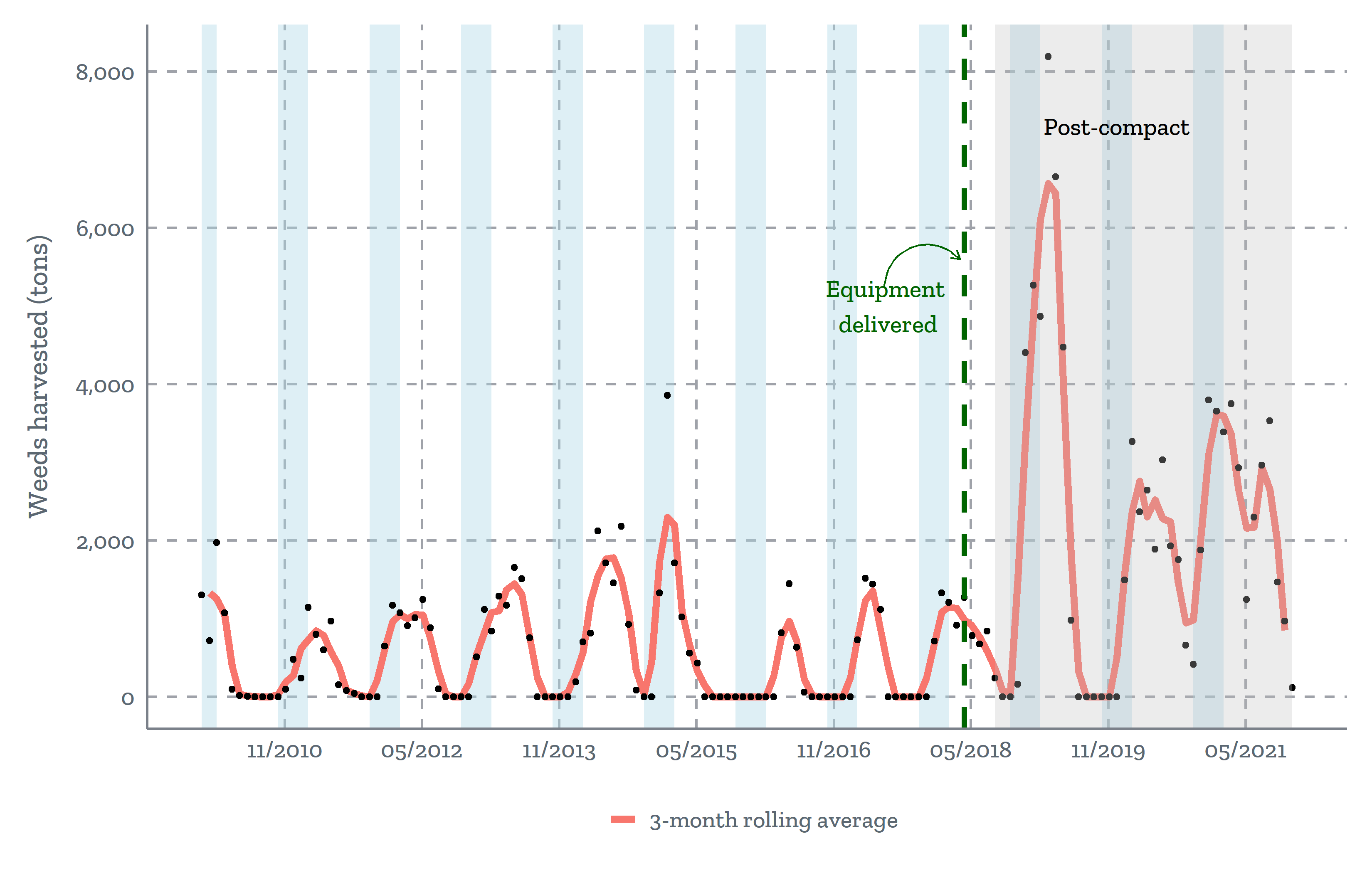
Amount of weeds harvested before and after dredging equipment was delivered.
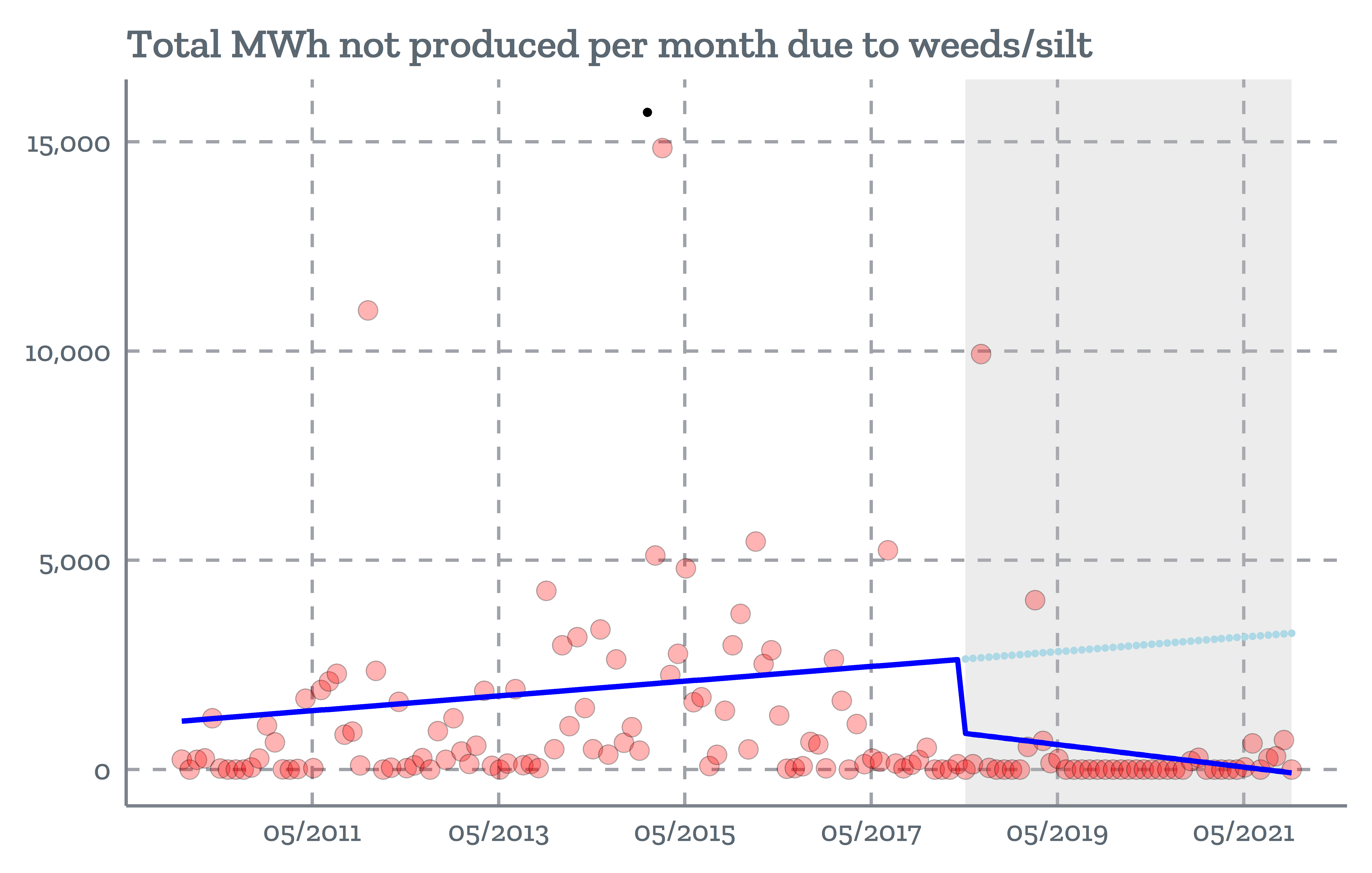
MWh of electricity not produced because of weeds or silt for the Nkula, Tedzani, and Kapichira hydropower plants.
Environmental Trust Sub-Activity
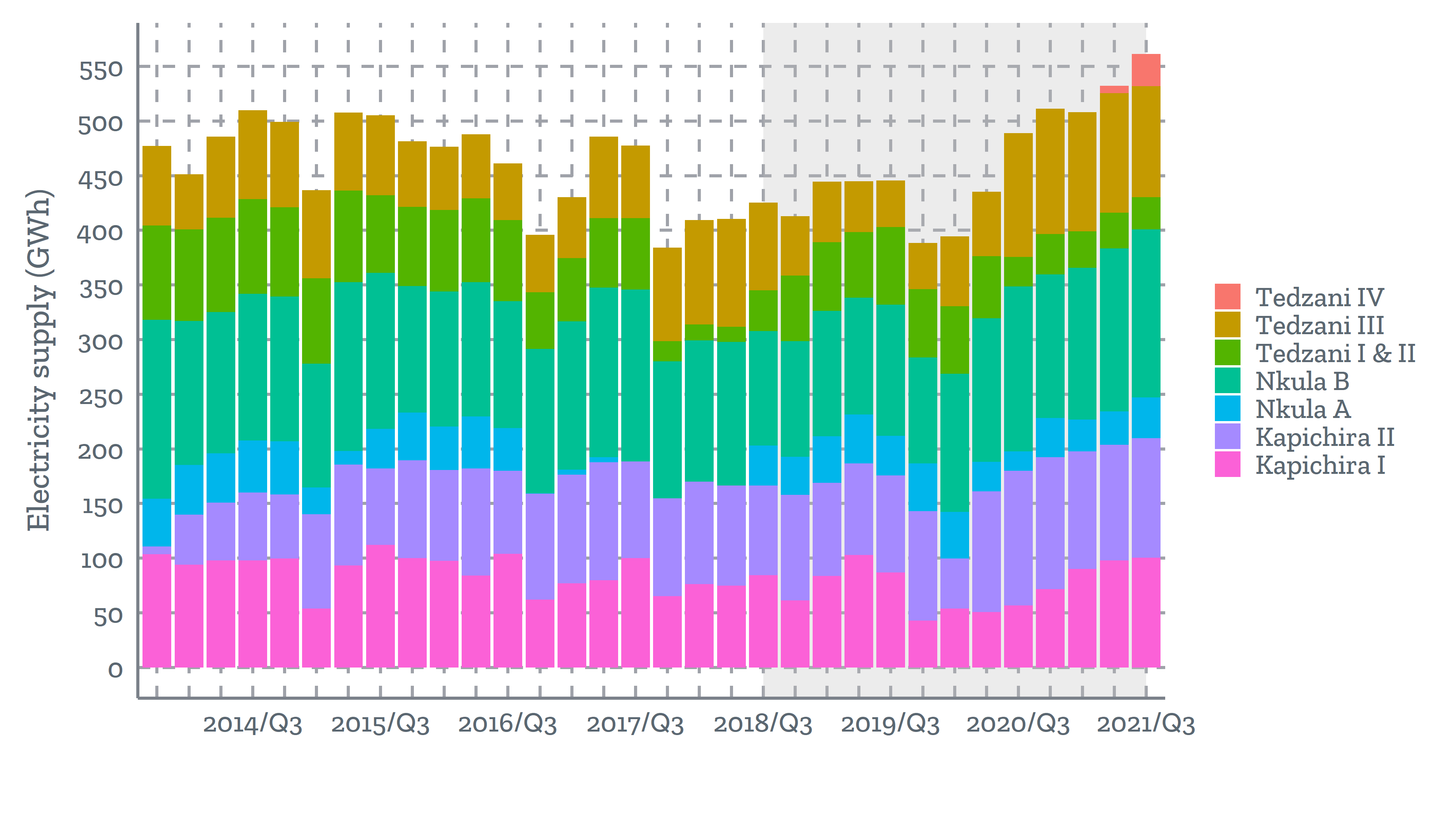
Amount of electricity that was produced in a three-month period by each hydropower station.
Overall ENRM Project
ENRM Project activities led to significant reductions in weed- and sediment-related electricity losses, both in terms of electricity output and total hours of production. The average difference between pre-treatment and post-treatment periods was respectively 1.74 gigawatt hours of avoided monthly electricity losses and 79 hours of less downtime across all three hydropower plants. Hydropower reliability also improved. Between 2020 and 2021, plant availability, or the percentage of time a hydropower plant is able to generate electricity, exceeded the end-of-compact target of 89 percent across all three generation sites, though each plant spent several months below the target levels during the treatment period. Since sustainable land management practices have yet to be scaled up throughout the Shire River Basin, weed and sediment management activities will have to continue in order to sustain the benefits observed in the evaluation.MCC Learning
- Plans to support newly established institutions should extend beyond the compact term and involve other donor partners.
- Maintenance planning for specialized equipment should involve tailored strategies for procuring services and spare parts.
- Comprehensively assess long-term resources, roles, and responsibilities implicated for partner institutions as part of environmental sustainability planning during project design.
Evaluation Methods
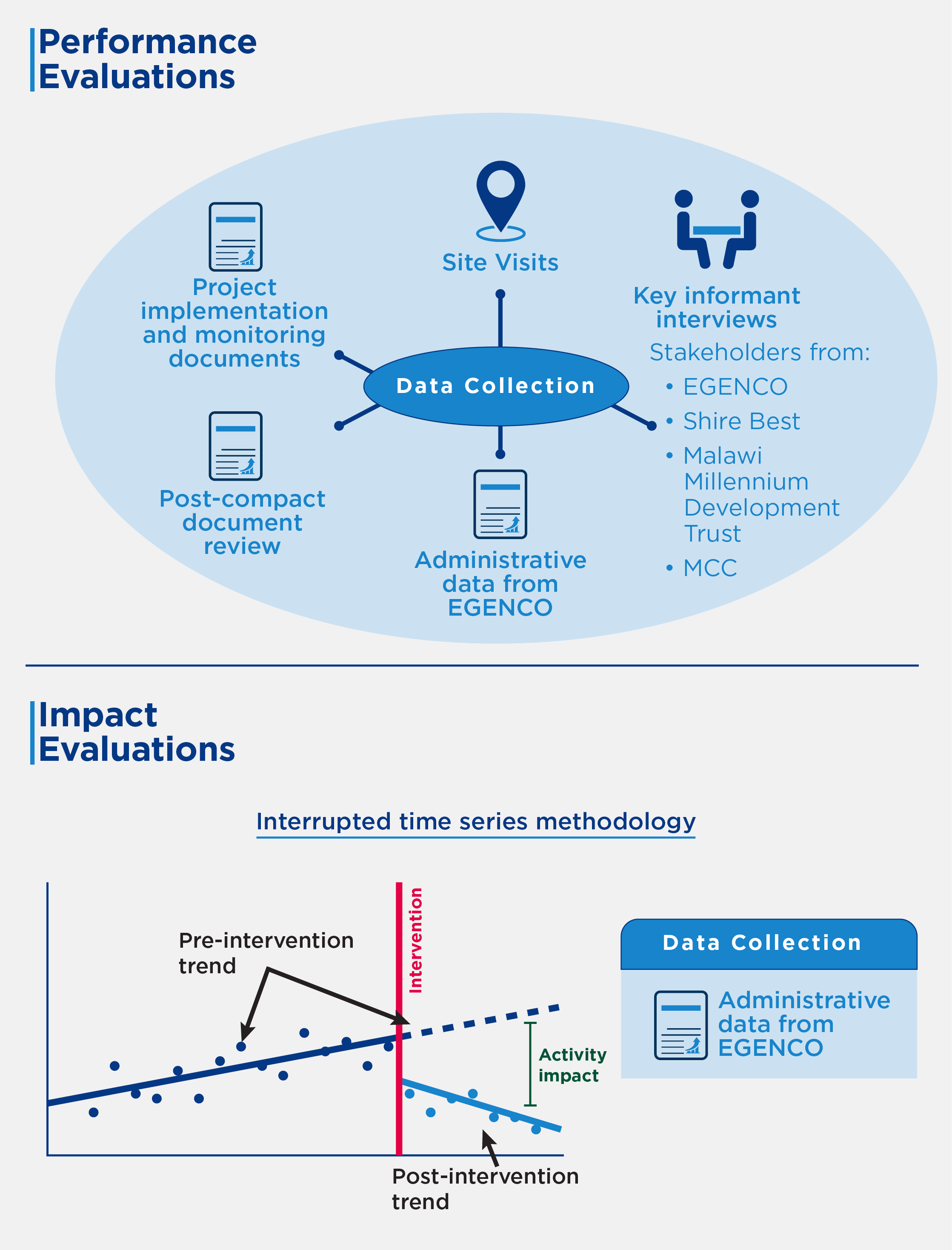
For the performance evaluations, Mathematica collected both qualitative and quantitative data, drawn primarily from site visits; project implementation and monitoring documents; a review of documents produced since the compact closed; and key informant interviews conducted between July 2021 and January 2022 with employees from EGENCO, the Malawi Millennium Development Trust, MCC, and staff and trustees of Shire BEST. Where quantitative data were available for the WSM Activity, a descriptive trends analysis was conducted alongside the qualitative analysis to identify patterns in time-series data.
For the impact evaluations of the WSM Activity and the overall ENRM Project, Mathematica applied an interrupted time series (ITS) methodology. The ITS method estimates a pre-intervention trend from routinely collected time-series data for periods prior to the Activity in order to make predictions for subsequent periods. Those predictions are compared against observed data in the post-Activity period, with the estimated difference between the two interpreted as the Activity’s impact under a set of stated assumptions. Mathematica applied this method to electricity and weed/sediment management outcomes using administrative data from EGENCO.
The exposure periods for our analyses are specific to the intervention of interest. Since the weed management equipment at Liwonde became operational in May 2018, the exposure period to observe impacts extends up to approximately 3.5 years (through December 2021). Dredging operations began at Kapichira in April 2020, and therefore the exposure period is shorter, with 1.5 years to observe impacts. For both interventions, improvements in hydropower productivity would be immediate and increasing in magnitude over time as the underlying problem—excess weed undergrowth or sediment deposition volume—is resolved. When assessing overall impacts from the combination of weed and sediment management equipment, we apply the earlier treatment start date which results in a 3.5 year exposure period. For the Environmental Trust Sub-Activity, because Shire BEST roughly became operational in mid-2018, its exposure period for analysis also roughly 3.5 years.
2022-002-2730


